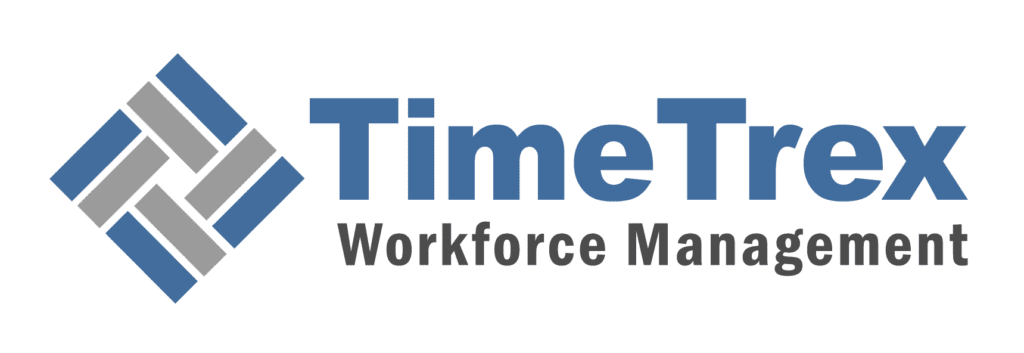
U.S. Tariffs on the European Union in 2025
Navigating the complex landscape of European tariffs has become a critical challenge for businesses in 2025. The dynamic relationship between the United States and the European Union has introduced a multi-layered system of U.S. tariffs on the EU, impacting supply chains and investment decisions. This comprehensive analysis of 2025 transatlantic trade policies explores the key tariff regimes, including the new Framework Agreement, Section 232 duties, and the Reciprocal Tariff Regime, providing businesses with the essential insights needed to understand the current state of U.S.-EU trade tariffs.
Article Contents
- TL;DR
- The 2025 U.S.-EU Framework Agreement: A Foundation of Managed Trade
- The U.S. Reciprocal Tariff Regime: A Universal Surcharge
- Deep Dive into Section 232 National Security Tariffs
- European Union Countermeasures: A Calibrated Retaliation
- The Latent Threat of Section 301 Tariffs
- Synthesis and Strategic Outlook
- Calculate Your Tariff Costs
TL;DR
In 2025, U.S. trade policy towards the European Union is a complex mix of negotiation and unilateral action. Goods from the EU can face up to four different tariff types. The new U.S.-EU Framework Agreement sets a baseline tariff of 15% (or the existing MFN rate, whichever is higher) for most goods, but with key exceptions for industries like auto and aerospace. Running parallel is a unilateral 20% Reciprocal Tariff on EU goods, though the Framework Agreement often modifies this. Section 232 "national security" tariffs have been intensified, with a steep 50% tariff on steel and aluminum and new tariffs on timber. The EU has responded with its own calibrated retaliatory tariffs on iconic U.S. goods like bourbon and motorcycles, though implementation is paused for negotiation. While major Section 301 tariffs are currently suspended, the mechanism remains a threat, especially over unresolved issues like Digital Services Taxes. For businesses, this means higher costs, significant uncertainty, and a critical need to understand how these overlapping tariffs apply to their specific products.
The 2025 U.S.-EU Framework Agreement: A Foundation of Managed Trade
After months of escalating trade tensions, the United States and the European Union announced a "colossal" new trade deal, formally establishing the "Framework on an Agreement on Reciprocal, Fair, and Balanced Trade" on August 21, 2025. This agreement marks a departure from traditional free trade agreements. Instead of eliminating tariffs, it establishes a new paradigm of managed trade, institutionalizing a baseline tariff level while creating specific, negotiated carve-outs for strategically important industries.
The Core 15% Tariff Structure
The central pillar of the Framework Agreement is a new tariff structure for goods originating in the European Union. The United States has committed to apply the higher of either the standard US Most Favored Nation (MFN) tariff rate or a new tariff rate of 15%. This 15% rate is comprised of the existing MFN tariff and an additional "reciprocal tariff." This structure effectively sets a 15% floor for duties on most EU products entering the US market, designed to generate revenue and encourage local sourcing.
Sectoral Carve-Outs and Special Provisions
The agreement's nature as a managed trade pact is evident in its detailed sectoral provisions:
- Automotive: A key concession for the EU, the agreement limits the impact of Section 232 tariffs. For EU auto products, the combined MFN and Section 232 tariff rate is capped at 15%. However, a long-standing discrepancy remains a point of contention in negotiations.
Automotive Tariff Asymmetry
The EU's 10% tariff on US cars is four times higher than the 2.5% tariff the US levies on cars imported from the EU. This continues to be a point of friction.
- Steel, Aluminum, and Copper: These metals are explicitly excluded from the new 15% regime. The EU will continue to face the 50% Section 232 tariff rate on these products.
- Pharmaceuticals and Semiconductors: The agreement functions as a tariff cap, ensuring the total tariff rate on EU-originating pharmaceuticals and semiconductors does not exceed 15%.
The MFN-Only Exemption List
Effective September 1, 2025, a list of EU products is exempt from the new 15% tariff structure and will only be subject to standard MFN tariffs. This list includes unavailable natural resources (like cork), all aircraft and aircraft parts, and generic pharmaceuticals. This exemption for the aerospace sector is particularly significant, protecting the deeply integrated transatlantic aviation industry.
Addressing Non-Tariff Barriers (NTBs)
Beyond tariffs, the Framework Agreement contains commitments to address non-tariff barriers. Both sides have pledged to work on mutual recognition of standards for automobiles, streamline agricultural requirements for pork and dairy, cooperate on secure energy supplies, and uphold the moratorium on customs duties for electronic transmissions.
The U.S. Reciprocal Tariff Regime: A Universal Surcharge
Operating in parallel with the negotiated Framework Agreement is the unilateral Reciprocal Tariff Regime. This broad-based program predates the US-EU deal and represents a more aggressive approach to trade policy, driven by the goal of reducing the US goods trade deficit.
The Two-Tiered Rate Structure
Implemented in April 2025, the regime established a universal 10% baseline ad valorem tariff on most global imports. However, a higher, country-specific tariff rate of 20% was applied to goods originating from the European Union, effective April 9, 2025. While the Framework Agreement modifies this rate for many products, the underlying legal architecture of this punitive regime remains, creating a complex interplay between negotiated and unilateral actions.
Scope, Exemptions, and Key Modifications
The Reciprocal Tariff Regime was designed to be broad but included crucial exemptions to prevent "stacking" on top of other trade actions. Exempted goods include steel and aluminum (already subject to Section 232), automobiles, pharmaceuticals, semiconductors, and lumber articles. Notably, the de minimis exemption for low-value shipments was suspended for all countries, meaning they are now subject to all applicable duties.
Deep Dive into Section 232 National Security Tariffs
The use of Section 232 of the Trade Expansion Act of 1962 has been a central feature of US trade policy in 2025. The administration has intensified existing tariffs and broadened the "national security" justification to new sectors, reframing economic competitiveness as a core security component.
Steel and Aluminum: A Hardening Stance
In a major escalation, the tariff-rate quota (TRQ) system for EU steel and aluminum was terminated. On June 4, 2025, the Section 232 tariffs on these imports were raised to a steep 50% ad valorem tariff. The scope of products has also been systematically expanded to include derivative articles, with hundreds of new tariff subheadings added to the list of dutiable goods.
Timber and Lumber: A New Front
In a significant expansion, new Section 232 tariffs were imposed on timber, lumber, and their derivative products, effective October 14, 2025. The rationale is to counter foreign subsidies and incentivize domestic production. The tariff structure is multi-tiered, with rates of 10% on softwood lumber and 25% on products like upholstered furniture and kitchen cabinets (with scheduled increases).
Special Provision for the EU in Lumber Tariffs
Critically, the bilateral Framework Agreement moderates the impact of these new lumber tariffs on the EU. The presidential proclamation specifies that the combined MFN and Section 232 tariff rate on wood imports from the EU shall not exceed 15%.
European Union Countermeasures: A Calibrated Retaliation
Faced with a multi-pronged tariff assault, the European Union has responded with a firm and strategically calibrated set of countermeasures designed to exert political pressure while minimizing economic harm to its own industries.
The Two-Phase Response Strategy
The EU's response is structured in two phases:
- Phase One: Reinstatement of 2018 Measures. Effective April 15, 2025, the EU reinstated tariffs on iconic US products, including bourbon whiskey, Harley-Davidson motorcycles, and jeans. This initial phase targeted approximately €8 billion of US goods.
- Phase Two: New Countermeasure Package. A new, larger package of countermeasures was approved, targeting an estimated €18 billion of US industrial and agricultural products with a 25% tariff.
Strategic Delays and the Role of Negotiation
The EU has consistently used timing as a tactical tool. Following the announcement of the Framework Agreement, the EU announced it would delay its new retaliatory tariffs for six months, pushing potential implementation to at least March 2026. This pause is designed to give both sides time to implement the new trade agreement and restore stability.
| Retaliation Phase | Key Product Categories Targeted | Applicable EU Tariff Rate | Estimated Trade Value |
|---|---|---|---|
| Phase 1 (Reinstated 2018/2020 Measures) | Bourbon whiskey, motorcycles, jeans, peanut butter, orange juice, specific steel & aluminum products | 10% - 25% | ~ €8 billion |
| Phase 2 (New 2025 Measures) | Broad list including food & beverage products, personal care, textiles, wood, transportation equipment | 25% | ~ €18 billion |
The Latent Threat of Section 301 Tariffs
Section 301 of the Trade Act of 1974 remains a powerful tool in the U.S. trade policy arsenal. While major disputes have been resolved or suspended, new flashpoints, particularly in the digital economy, pose a significant risk of triggering future investigations and retaliatory tariffs.
The Large Civil Aircraft Dispute: A Five-Year Truce
The long-running dispute over subsidies for Boeing and Airbus, which led to billions in tit-for-tat tariffs, is currently paused. The US and EU agreed to a five-year suspension of these tariffs, effective until July 2026. However, the USTR retains the authority to re-impose the tariffs immediately if it determines the EU is not complying with the new cooperative framework.
Value of Two-Way Trade Affected by Suspended Tariffs
$11.5B
(Aircraft Dispute Alone)
What does "Suspended" mean?
Instead of being eliminated, these tariffs are paused for a multi-year period pending negotiations. This creates stability but leaves the door open for tariffs to be re-imposed if agreements are not reached on goods from aircraft to wine and cheese.
Impact of Suspended Tariffs on Key EU Goods
The Airbus-Boeing dispute settlement led to the suspension of tariffs on a wide array of consumer and industrial goods. This chart highlights the dramatic shift from significant duties to zero tariffs, providing relief for producers and consumers on both sides of the Atlantic.
Emerging Flashpoints: Digital Services Taxes (DSTs)
The most significant unresolved issue with the potential to trigger a new Section 301 investigation is the implementation of Digital Services Taxes by some EU member states. The US government views these taxes as discriminatory against American tech firms and has threatened to impose new, unspecified tariffs on any country that imposes a DST. This remains the most volatile and unpredictable element in the U.S.-EU trade relationship.
Potential Path to DST Tariffs
Synthesis and Strategic Outlook
The current US-EU trade environment is defined by unprecedented complexity. The simultaneous existence of a negotiated bilateral framework, unilateral reciprocal tariffs, and expanding national security duties creates a multi-layered tariff structure that requires careful navigation.
| Tariff Regime | Legal Authority | General Rate for EU | Key Affected Sectors | Effective Date |
|---|---|---|---|---|
| Framework Agreement Tariff | Bilateral Agreement / Executive Order | The higher of the MFN rate or 15% | Most goods, including autos, pharmaceuticals, and semiconductors (at capped rates) | Phased from Sept. 1, 2025 |
| Reciprocal Tariff | Presidential Memo / Exec. Order 14257 | 20% (replaces 10% baseline for the EU) | All non-exempt goods. Does not stack with Section 232 tariffs. | April 9, 2025 |
| Section 232 Steel & Aluminum | Section 232 of Trade Expansion Act of 1962 | 50% | Steel and aluminum products and their derivatives | June 4, 2025 |
| Section 232 Timber & Lumber | Section 232 of Trade Expansion Act of 1962 | Combined MFN + 232 rate not to exceed 15% | Softwood lumber, upholstered furniture, kitchen cabinets and vanities | October 14, 2025 |
Forward-Looking Analysis: Triggers for 2026
The US-EU trade relationship remains fluid, with several potential flashpoints that could alter the landscape. Beyond legal challenges and negotiation deadlines for retaliatory tariffs, new policy initiatives could introduce further friction. One such area is the EU's proposed Carbon Border Adjustment Mechanism (CBAM), a plan to tax carbon-intensive imports like steel and aluminum. This could negatively impact US exports and may provoke countermeasures from Washington.
On the Horizon: Carbon Border Tariffs (CBAM)
Strategic Recommendations for Businesses
The cumulative effect of these tariffs leads to higher input costs for US manufacturers and uncertainty that chills business investment. To navigate this environment, businesses must adopt a proactive approach:
- Enhance Tariff Classification and Origin Expertise: Ensure products are classified under the most advantageous HTS codes and review supply chains for origin engineering opportunities.
- Leverage Duty Deferral Programs: Explore the use of Foreign-Trade Zones (FTZs), bonded warehouses, and Temporary Importations Under Bond (TIBs) to defer, reduce, or eliminate duty payments.
- Conduct Proactive Supply Chain Mapping: Gain deep visibility into multi-tiered supply chains to identify hidden risks and qualify alternative suppliers in different jurisdictions.
- Engage in Active Policy Monitoring: Establish a process for actively monitoring policy developments from the USTR, the Department of Commerce, and the European Commission.
Calculate Your Tariff Costs and Stay Compliant
The complexity of European tariffs and U.S. reciprocal duties requires precise calculations and strategic planning. Misinterpreting these multi-layered tariffs can lead to unexpected costs and compliance issues. Use our advanced tool to accurately determine your total tariff burden and navigate the challenges of transatlantic trade with confidence.
Use the U.S. Tariff CalculatorDisclaimer: The content provided on this webpage is for informational purposes only and is not intended to be a substitute for professional advice. While we strive to ensure the accuracy and timeliness of the information presented here, the details may change over time or vary in different jurisdictions. Therefore, we do not guarantee the completeness, reliability, or absolute accuracy of this information. The information on this page should not be used as a basis for making legal, financial, or any other key decisions. We strongly advise consulting with a qualified professional or expert in the relevant field for specific advice, guidance, or services. By using this webpage, you acknowledge that the information is offered “as is” and that we are not liable for any errors, omissions, or inaccuracies in the content, nor for any actions taken based on the information provided. We shall not be held liable for any direct, indirect, incidental, consequential, or punitive damages arising out of your access to, use of, or reliance on any content on this page.
About The Author

Roger Wood
With a Baccalaureate of Science and advanced studies in business, Roger has successfully managed businesses across five continents. His extensive global experience and strategic insights contribute significantly to the success of TimeTrex. His expertise and dedication ensure we deliver top-notch solutions to our clients around the world.
Time To Clock-In
Start your 30-day free trial!
Experience the Ultimate Workforce Solution and Revolutionize Your Business Today
- Eliminate Errors
- Simple & Easy To Use
- Real-time Reporting

Saving businesses time and money through better workforce management since 2003.
Copyright © 2025 TimeTrex. All Rights Reserved.
